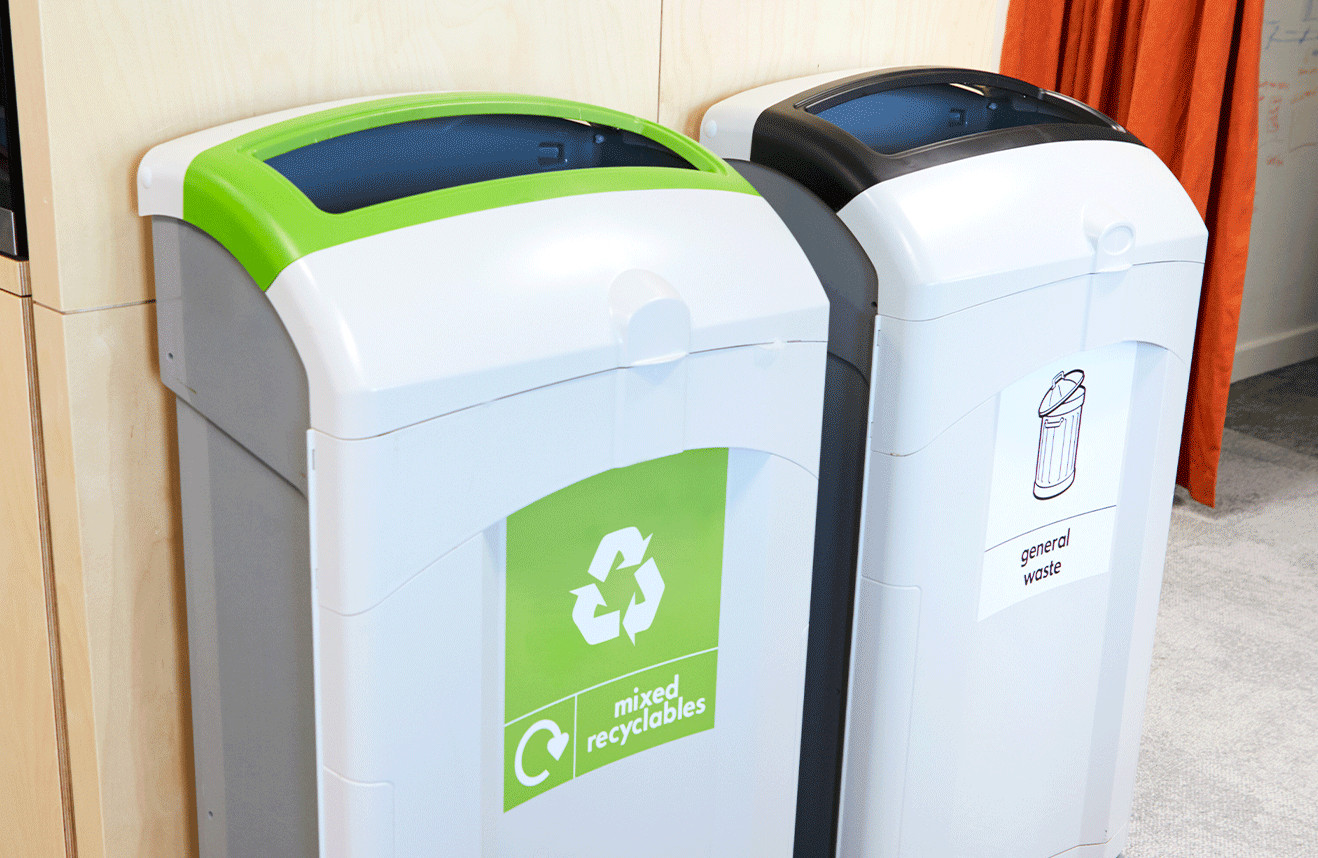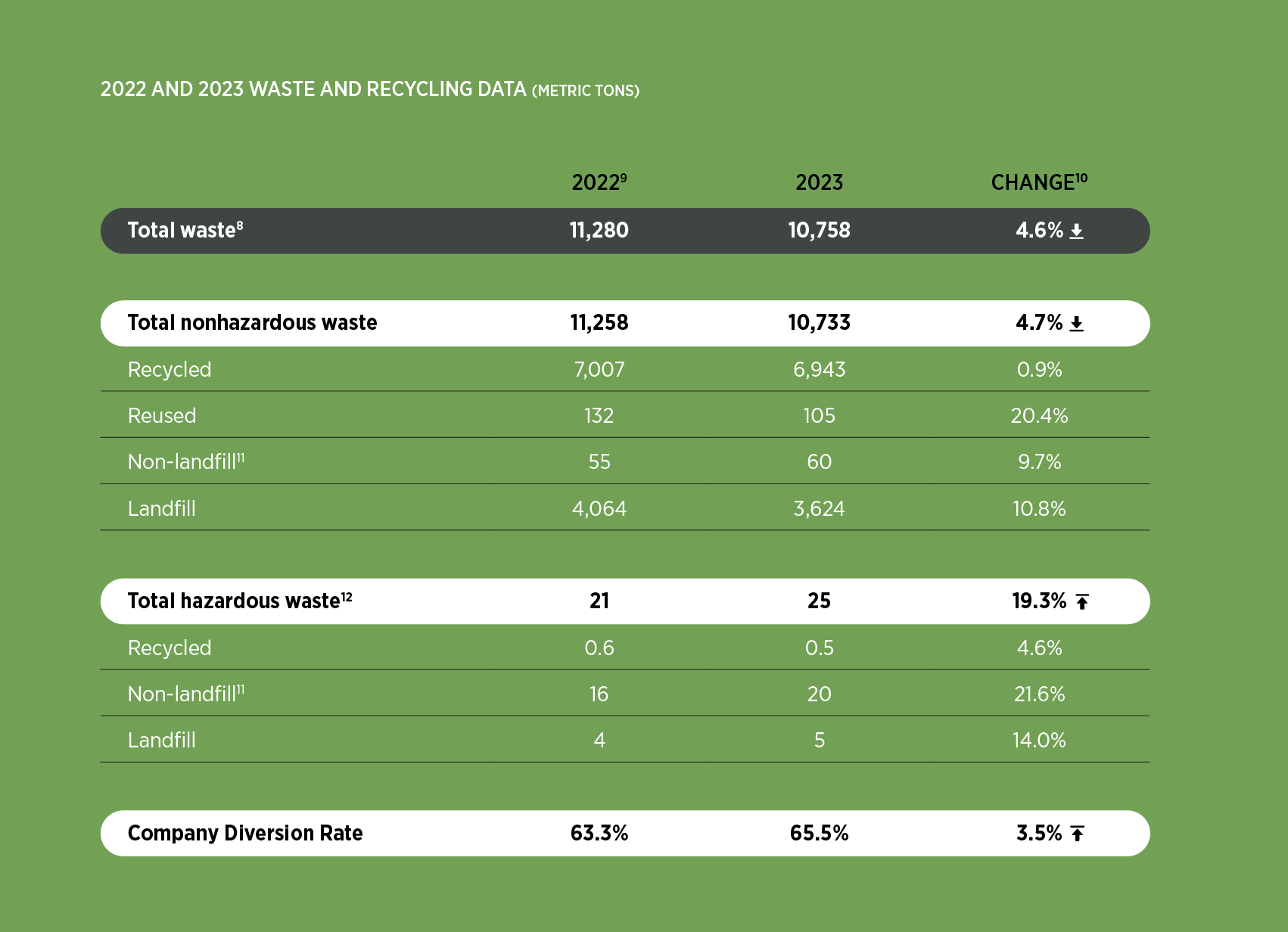8 Waste data does not include wastes generated from remediation activity taking place at locations no longer owned by Zurn Elkay. In 2023 we disposed of 184 metric tons of nonhazardous waste and 17 metric tons of hazardous waste due to remediation activity.
9 Due to improvements in data tracking and auditing, we have restated our nonhazardous waste data for 2022.
10 Percent change is based on actual values rather than rounded ones shown in the table.
11 Non-landfill disposal methods are incineration and off-site process water treatment.
12 Increase in 2023 was due to a new waste stream that must be managed as a hazardous waste.
Waste Reduction and Recycling in Practice
In 2023, we set a new target to reduce waste to landfill by 2% annually. We investigated our baseline waste data to better understand the inputs across our operations, especially at facilities with high waste-to-landfill rates. This data will guide our efforts in 2024 and beyond to divert waste for recycling or eliminate waste where possible. We encourage associates across our organization to share their ideas and suggestions to reduce or eliminate waste at their facilities, through our WAVES Social Impact Fund Program.

